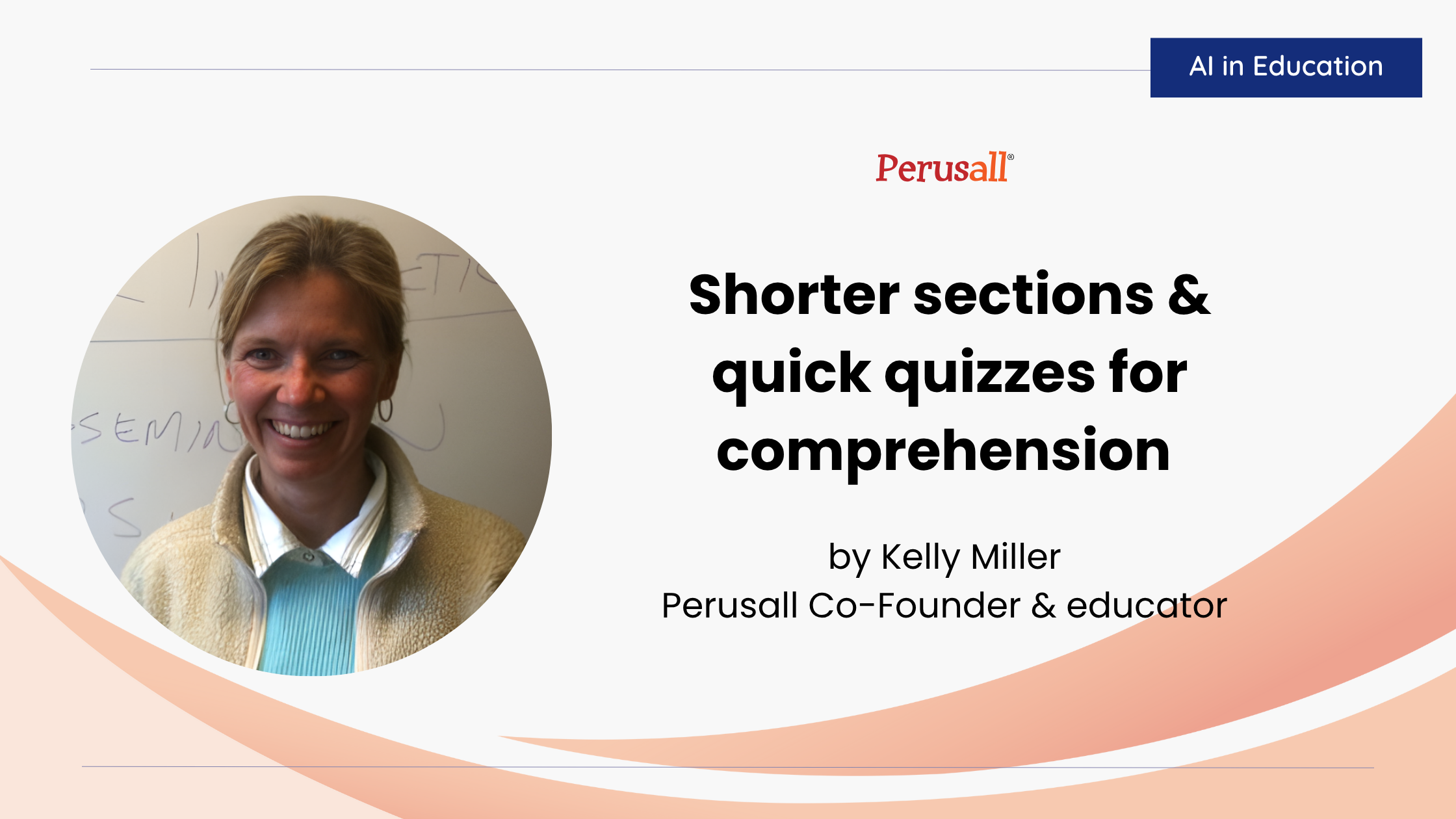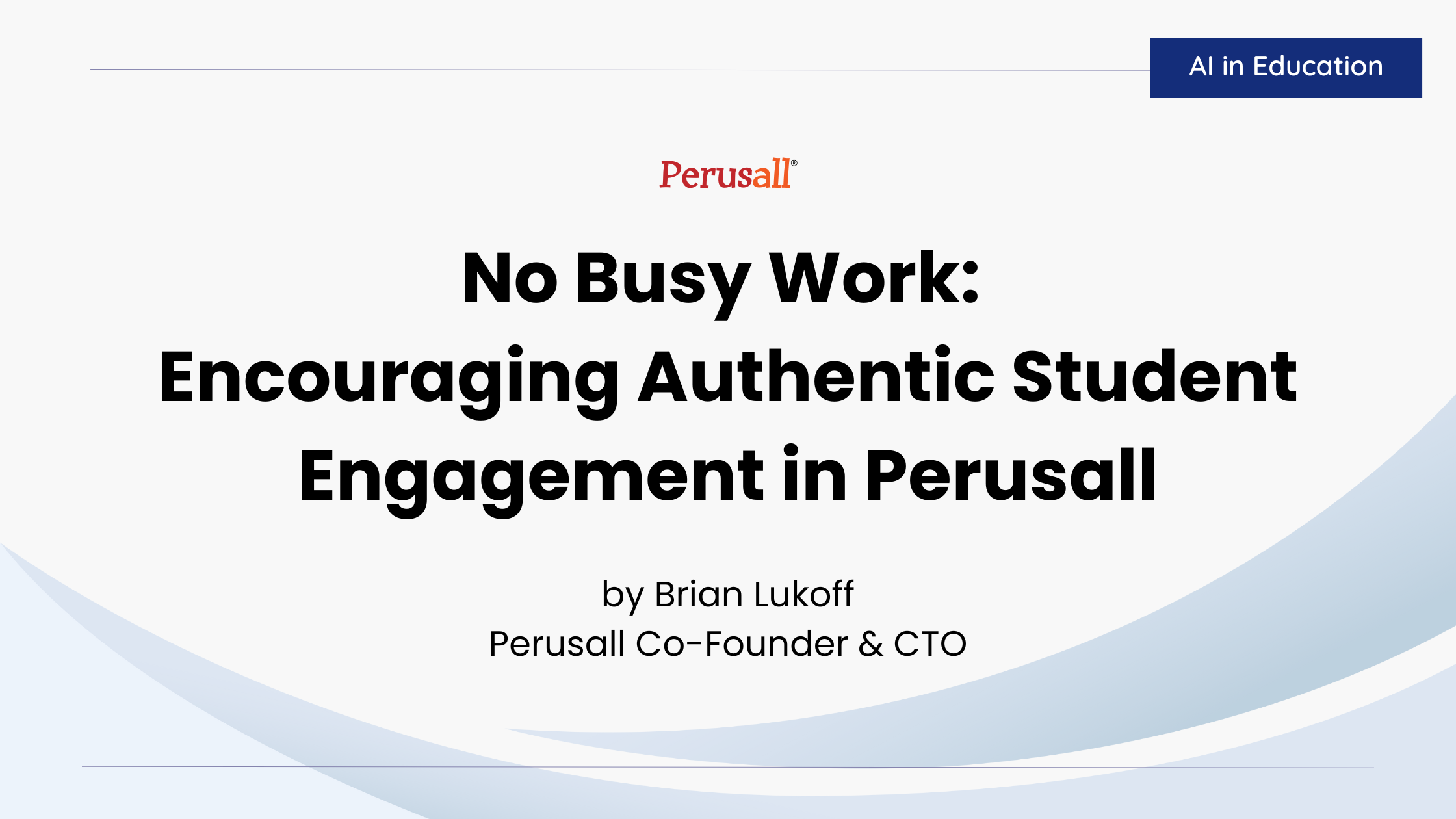Although I began using social annotation practices before the COVID-19 pandemic hit, I have found myself increasingly relying on Perusall to guide and structure my classes now that I am primarily teaching online. A number of folks have written about the value of social annotation in the past year, so I do not want to rehash the many great arguments in favor of using platforms like Perusall . The benefits in terms of reading comprehension, close textual analysis, and critical thinking are pretty clear. What I do want to think about for a moment, however, are the more intangible benefits of such platforms when it comes to building community.

One of my biggest concerns when teaching online has always been the inability to replicate my charismatic personality in a learning management system. I rely heavily on tone, visual cues, and enthusiasm to steer and direct conversations in my face-to-face classes—something that can be hard to make visible online. This is especially true when teaching asynchronously.
Yet the move to using social annotation tools, and using them heavily, has allowed me new modes of creating community. They are not mirrors of the work I do in-person, but they cover a lot of ground. More specifically, by encouraging formal and informal responses to the readings, I have started using all of the multimodal writing tools available in Perusall to communicate personality online. For example, the use of emojis, GIFs, hyperlinks, memes, and hashtags in my own comments creates a number of side conversations (about cultural references, popular media, and rhetorical strategies) that can go missing when in-person classes move online.
To learn more, register for a Perusall webinar and see how Perusall supports community building in online and face-to-face courses.

Using such features allow me—and my students—to present a bit more of ourselves in virtual spaces than one typically sees on a discussion board or in a quiz. These micro-relationships that form, then, become foundational to our class community and eventually enable students to more freely and eagerly respond not only to me online—but to their peers as well. And one striking revelation in doing this has been how social annotation platforms, in some ways, become more egalitarian spaces for my students. The introverts are not left behind when a frenetic conversation does not leave them time to think through their ideas. Students who might struggle to speak up when seeing themselves occupying a minority identity or ideology next to their classmates is often able to speak up better in these virtual spaces (and can use anonymity tools for some posts)—which enriches and complicates our discussions of the texts.
And for me, as somebody who often teaches visual texts, the ability for students to come together to make sense of small details in a comic or piece of art can forge bonds that remind me of the discoveries that get made when we tackle passages closely together in a face-to-face class.
If I have taken anything away from this year spent teaching entirely online, it is that social annotation and collaborative reading practices will be a hallmark of my teaching for years to come—regardless of the classroom modality. If you have not taken the opportunity to try out platforms like Perusall yet, I highly recommend it. And if you have practices and/or assignments tied to social annotation that you want to share, please do!




.png)



